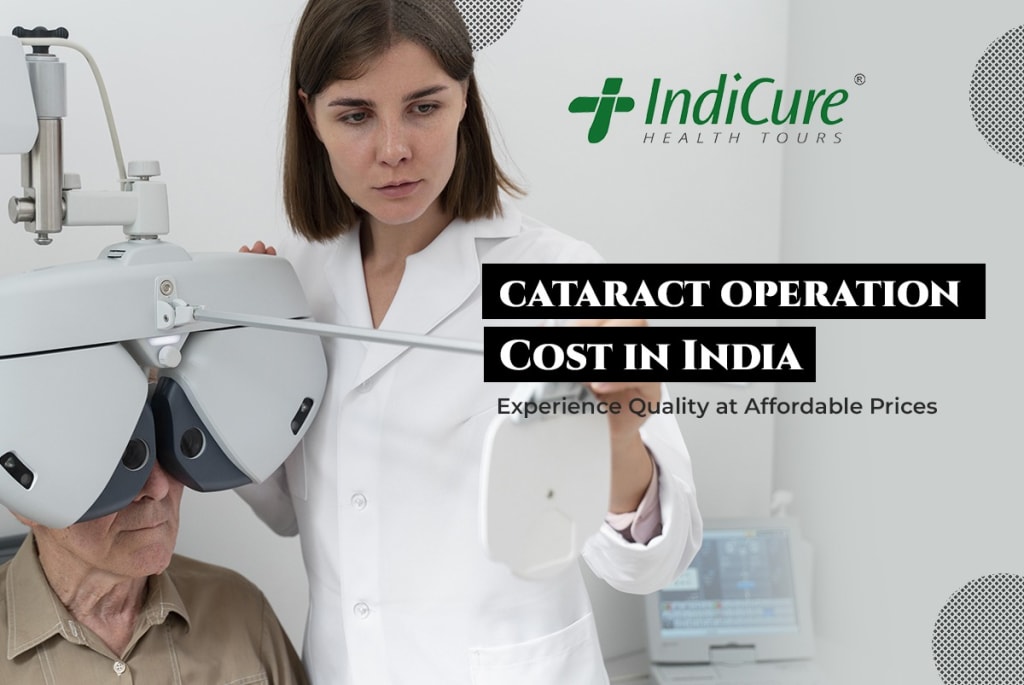Everything You Need to Know About Types of Cataract Surgery in India
Cataract Surgery in India

Cataract surgery is one of the most common and successful procedures performed worldwide to restore vision impaired by cataracts. In India, this procedure is widely accessible and affordable, making it a popular destination for medical tourism. In this article, we will discuss the different types of cataract surgery available in India and provide insights into cataract surgery cost in India. .
1. Phacoemulsification
Phacoemulsification, also known as phaco, is the most common and advanced technique used for cataract removal. This minimally invasive procedure involves the use of ultrasound energy to break up the cloudy lens into tiny fragments, which are then suctioned out through a small incision. Phacoemulsification offers several advantages, including faster recovery, reduced surgical trauma, and minimal risk of complications. It is performed under local anesthesia and usually takes around 15-30 minutes.
Phacoemulsification is the preferred method for cataract surgery due to its numerous benefits. Here's a closer look at why this technique is highly regarded:
1. Minimally Invasive: Phacoemulsification is a minimally invasive procedure that requires only a small incision (approximately 2-3 millimeters) in the cornea. This smaller incision reduces the risk of complications and allows for faster healing compared to traditional surgery.
2. Faster Recovery: The smaller incision used in phacoemulsification requires fewer sutures and promotes quicker healing. Patients generally experience a faster recovery time and can resume their normal activities within a few days after surgery.
3. Reduced Surgical Trauma: The use of ultrasound energy to break up the cataract allows for gentle removal of the cloudy lens, minimizing trauma to the eye. This technique is particularly beneficial for individuals with fragile or delicate eye structures.
4. Precise and Controlled: Phacoemulsification offers surgeons precise control during the procedure. The ultrasound energy helps emulsify the cataract, turning it into tiny fragments that can be easily removed. The surgeon can precisely target and remove the cataract, ensuring better visual outcomes.
2. Manual Small Incision Cataract Surgery (MSICS)
Manual Small Incision Cataract Surgery (MSICS) is another technique used for cataract removal in India. It involves creating a small incision in the eye, through which the surgeon manually removes the cloudy lens. MSICS is a cost-effective alternative to phacoemulsification and is suitable for cases where phacoemulsification may not be feasible. This procedure is also performed under local anesthesia and has a slightly longer recovery time compared to phacoemulsification.
During the MSICS procedure, the surgeon creates a small self-sealing incision of about 6-7 mm in the cornea or sclera. This incision allows the surgeon to access the cloudy lens and remove it manually. The surgeon carefully opens the lens capsule, breaks up the cataract into smaller fragments, and removes them using specialized instruments.
3. Laser-Assisted Cataract Surgery (LACS)
Laser-Assisted Cataract Surgery (LACS) is an advanced form of cataract surgery that utilizes a femtosecond laser to perform certain steps of the procedure. The laser is used to create precise incisions, soften the cataract, and break it up into smaller pieces before removal. LACS offers enhanced precision and customization, potentially leading to better visual outcomes. However, it is important to note that LACS is relatively more expensive compared to traditional techniques like phacoemulsification or MSICS.
One of the key benefits of LACS is the ability to create precise incisions. The laser can create corneal incisions with high accuracy, resulting in a more predictable wound architecture. This precise incision allows for a self-sealing effect, reducing the need for sutures and promoting faster healing.
Another advantage of LACS is the ability to soften the cataract before its removal. The laser energy can be used to break up the cataract into smaller, more manageable fragments. This fragmentation process facilitates easier and gentler removal of the cataract, reducing the overall energy used during the surgery and potentially minimizing the risk of complications.
Cataract Operation Cost in India
One of the key reasons why India is a popular choice for cataract surgery is the cost-effectiveness of the procedure. The cataract operation cost in India varies depending on factors such as the type of surgery, the city or hospital chosen, the surgeon's expertise, and the facilities provided. On average, the Cataract Operation Cost in India can range from INR 40,000 to 75,000 per eye ($500 to $1,000), depending on the aforementioned factors.
Factors Affecting Cataract Operation Cost in India
Type of Surgery: The type of cataract surgery chosen greatly influences the overall cost. Phacoemulsification, being the most common and advanced technique, is generally more expensive compared to manual small incision cataract surgery (MSICS).
City or Hospital: The cost of cataract surgery can vary depending on the city and hospital chosen. Metropolitan cities like Delhi, Mumbai, and Bangalore have the best eye hospitals in India and may have higher costs compared to smaller cities or towns.
Surgeon's Expertise: The experience and expertise of the surgeon performing the cataract surgery can affect the cost. The best eye doctors in India who are highly skilled and renowned, may charge a slighlty higher fee for their services.
Facilities Provided: The facilities offered by the hospital or eye clinic, such as the availability of advanced diagnostic equipment, pre-operative and post-operative care, and the quality of the facility itself, can influence the cost of cataract surgery.
Indicure: Facilitating Medical Tourism in India
Indicure Health Tours is a well-known medical tourism company in India that specializes in providing assistance to international patients seeking affordable and high-quality healthcare services. They offer a range of services, including consultation with experienced doctors, guidance in selecting the right hospital and surgeon, visa assistance, travel arrangements, and post-operative care. Indicure can help you find cost-effective cataract surgery options in India while ensuring a smooth and hassle-free experience.
Conclusion
Cataract surgery is a common and highly successful procedure for restoring vision impaired by cataracts. In India, various types of cataract surgery techniques are available, including phacoemulsification, MSICS, and LACS. The choice of surgery depends on the patient's specific needs and the surgeon's recommendation. India is a sought-after destination for cataract surgery due to its affordable costs and advanced medical facilities. With assistance from companies like Indicure, patients can access high-quality cataract surgery at a fraction of the cost compared to many other countries.
About the Creator
IndiCure Health Tours
IndiCure Health Tours is the most renowned medical tourism company offering medical treatment in association with best doctors and hospitals in India.
https://www.indicure.com/
Enjoyed the story? Support the Creator.
Subscribe for free to receive all their stories in your feed. You could also pledge your support or give them a one-off tip, letting them know you appreciate their work.






Comments
There are no comments for this story
Be the first to respond and start the conversation.